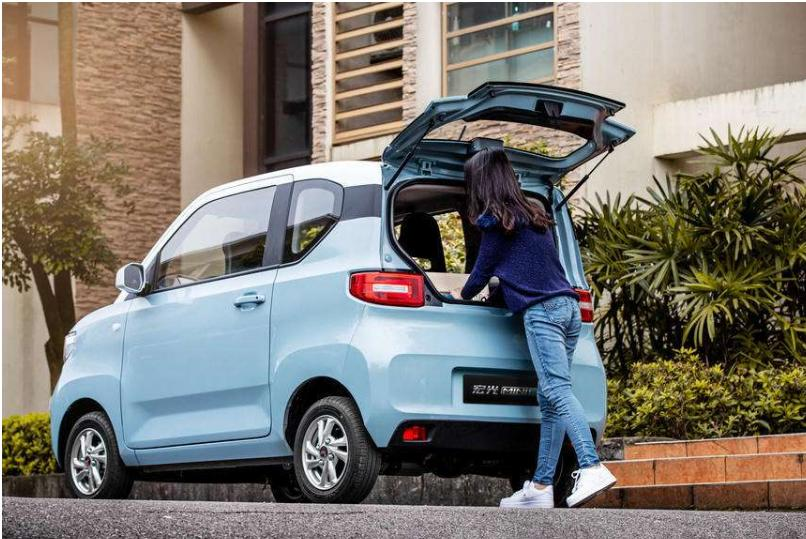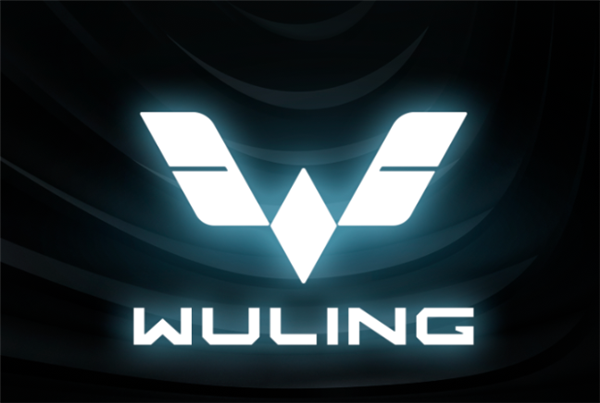This article is reproduced from Autocarweekly public account
Author: Joey
A few days ago, a good friend of mine bought a car specifically for her mom to go grocery shopping. When I heard the news, three words popped into my mind – “striving for wealth”!
Immediately, I asked what kind of car it was. The answer I got was a “Wuling Hongguang MINIEV”. Suddenly, two words popped into my mind again – “so delicious”!
Phenomenal masterpiece, breaking anxiety with low price
There is no doubt that the Wuling Hongguang MINIEV is a phenomenal existence, overturning people’s previous stereotypes about traditional cars and pure electric cars.
On this car, size is not an issue, and passenger space is not an issue. The pure electric vehicle’s range (170 km for high-end models and 120 km for low-end models) is not a problem, nor is safety (initial versions didn’t even have airbags, and current 2021 models only have driver-side airbags, with very few safety features).

Earlier, there were rumors that if you purchased a pure electric vehicle like the Wuling Hongguang MINIEV, you could not get a new energy license plate in Shanghai. Although there has been no official confirmation of this information, such messages are reasonable. Products like the Wuling Hongguang MINIEV, which break the bottom line of electric vehicles and even car prices, may shake up the Shanghai car plate – the highest-priced “sheet metal” in the country.
But none of this seems to affect the people’s love for it, the reason being it is cheap. After all, for the Wuling Hongguang, the company’s mission is to make everything that ordinary people need (including masks and snail noodles). And ordinary people’s most pressing need is “spend less money and do more things”.

Yes, in front of the price, all anxieties are paper tigers!
So, what has become of this phenomenal product?
On July 10th, the official WeChat account of Wuling Motors announced that since the Hongguang MINIEV was launched in July 2020, it had sold 310,418 vehicles in one year, ranking first in China’s new energy market for 10 consecutive months.If you think the Wuling Hongguang MINIEV is just a traditional “slow” family car that cannot run fast, you are completely wrong. Firstly, its length is less than three meters and its wheelbase is less than two meters, which means it cannot pull a lot. Secondly, its top speed is only 100km/h, so it is difficult for it to run fast. However, the term “slow” really has nothing to do with this car.
Nowadays, on popular “grass-planting” apps such as Weibo, Douyin, and Xiaohongshu, you can often see the Wuling Hongguang MINIEV. With its macaron color scheme, the contrast of the long-legged girls, and even the convertible version, at least from the surface, going viral is not a problem.
So what is the problem, then?
Is not making money the biggest immorality?
Several business giants in China, such as Shi Yuzhu, Jack Ma, and Wang Jianlin, have said: “Unprofitable companies are immoral (the meaning is roughly similar).”
Perhaps, this is the biggest problem that the Wuling Hongguang MINIEV is currently facing.
From the launch of the Wuling Hongguang MINIEV in July 2020 to the end of the year, in about half a year, a total of 127,651 units were sold. If calculated over six months, the monthly sales volume has reached 20,000 units. However, in the whole of 2020, SAIC-GM-Wuling’s net profit was only CNY 140 million, which is a sharp decrease from CNY 1.699 billion in 2019.
Although there must be factors such as the COVID-19 pandemic that have had a significant impact on the global economy. But do not forget that the MINIEV is a popular car. Even more so, SAIC-GM-Wuling sold 1.177 million cars under its brand throughout the year. In any case, the profit of a company with sales of millions of units is indeed difficult to understand.
However, from some perspectives, it is not difficult to understand. After all, for a car priced at less than 30,000 yuan, excluding various car manufacturing costs, personnel costs, warehouse logistics costs, and sales costs, there is indeed limited profit left.
So the question is, why does SAIC-GM-Wuling sell it this way? Are they really just looking to satisfy the people’s needs? Don’t think too hard; even I feel that this matter isn’t that simple.
SAIC-GM-Wuling has a mature ideaOn June 22, 2020, the Ministry of Industry and Information Technology issued a decision to revise the “Measures for the Parallel Administration of Corporate Average Fuel Consumption and New Energy Vehicle Credits for Passenger Car Enterprises”. This document includes the assessment proportions from 2021 to 2023. More importantly, in this set of “dual credit” policies, the credits in 2021 can be used to offset the credit gap in 2019-2020.
This set of “dual credit” policies once brought a very controversial development direction for traditional automobile companies—the “three-cylinder engine” wave. After the introduction of the dual credit and “CAFC” (China’s Corporate Average Fuel Consumption Limitation Standard) policies, many European, American, and even Japanese car brands have successively launched three-cylinder engines to meet the requirements. Within SAIC Group, SAIC-GM caught up with this trend.
From simple three-cylinder gasoline engines to later three-cylinder hybrid new energy vehicles, the emission standards have been met, but the market has never accepted the three-cylinder engine. Apart from natural problems such as large vibrations and noise, consumers find it difficult to accept such products psychologically, which has led to suspicion and concern about the service life, reliability, comfort, and other aspects of three-cylinder engines.
Therefore, it is obvious that Buick, equipped with a three-cylinder engine, has lost its past glory and is difficult to sell (the original popular model Verano was most affected). At this time, a pure electric vehicle that can sell well has become the best solution.
The Wuling Hongguang MINIEV is such a product!
With this car, SAIC Group obtained 440,000 new energy vehicle credits in 2020. The Wuling Hongguang MINIEV almost single-handedly solved the carbon neutrality and carbon peak targets of the entire SAIC Group.
In May 2021, a research report released by Cinda Securities showed that the current trading price of new energy vehicle credits has risen from the initial 300-500 yuan/credit to 2,500-3,000 yuan/credit. Calculated based on this, the Wuling Hongguang MINIEV has won more than 1.2 billion yuan in credit income for SAIC Group. If in 2019, SAIC Group still needed to purchase credits from other car companies, relying on the magical Wuling Hongguang MINIEV, SAIC Group has already “changed from being a serf to a lord”.
However, things always have two sides.Possibly inspired by the contribution of Wuling Hongguang MINIEV to the entire group’s carbon emissions and carbon neutrality efforts, it is reported that another micro electric vehicle, named Baojun KiWi EV, is expected to be launched in the third quarter of this year under SAIC-GM-Wuling’s Baojun brand.
According to current public information, this new vehicle with a somewhat vague name (Is it referring to New Zealanders? Kiwifruit? Weka birds?) may be the iterative model of Baojun’s previous electric vehicle, the E300. More importantly, this electric vehicle with similar features to the Hongguang MINIEV (small size and two doors) will likely follow in the footsteps of its predecessor, although the selling price has not been disclosed yet.
At this point, a related question arises: if SAIC-GM-Wuling continues to follow this “high-volume” route, how can they ensure the brand positioning and value?
In fact, SAIC-GM-Wuling has more popular models than just the Hongguang MINIEV electric vehicle. Whether it’s the “divine car” Wuling Hongguang or the well-performing Baojun 530 and 730 in the annual sales ranking, they can all be considered “high-volume” weapons. However, higher sales do not necessarily mean that they have brought out the brand value.
If vehicles like the Hongguang MINIEV and the potential Baojun KiWi EV do not continue to “win points” on this market road, then what is the potential of SAIC-GM-Wuling’s overall strategy, which focuses on having low brand added value but making friends instead of profit?
Is there no way to make money, increase brand awareness, and earn points all at once?
The options will determine the future path
In 2018, Great Wall Motors established a new energy vehicle brand called ORA.
It is hard to imagine that a car manufacturer like Great Wall, which focuses on SUVs, off-road vehicles, and pickups, seemingly geared toward “tough guys,” could develop a completely new, mini electric car brand like ORA. Moreover, Great Wall positioned this brand as one that loves women more and is committed to establishing a correct value system for female users in the industry.Actually, in terms of marketing, Ora has also adopted strategies similar to those of the Wuling Hongguang MINIEV – playing outside the box, targeting the second dimension, appealing to women, and taking the family route. They have done all of these things, such as the Ora R1, which is now called the Ora Black Cat, which has introduced youth versions, goddess versions, and parent-child versions, among others. many unique features of the Ora Black Cat can be reflected in these positioning characteristics. The color matching and configuration can satisfy young people and female consumers, and even the space and configuration can meet the needs of small families of three.
Unlike the Wuling Hongguang MINIEV’s explosive sales performance, Ora’s car sales have steadily increased from just over 30,000 units per year to 56,000 units per year. However, this steady increase and the step-by-step maturity of the brand’s reputation are obviously more beneficial to an independent brand.
I believe that Great Wall Motors also once hoped that the Ora brand could become a hot seller and solve its urgent need for carbon neutrality and peak carbon emissions. However, before this goal, Great Wall Motors seems to still hope to provide users with more diverse and suitable products. In this process, the first thing to stand firm is the brand, followed by the product, and finally the cost-effectiveness.
Undeniably, while the Wuling Hongguang MINIEV has made electric cars more accessible to everyone, it has also brought benefits to SAIC Group and solved its problems. However, if this car can further transition from cost-effectiveness to value for money, it may be able to establish a better SAIC-GM-Wuling brand while making money and producing cars for the people.
Clearly, this would be a better outcome.

This article is a translation by ChatGPT of a Chinese report from 42HOW. If you have any questions about it, please email bd@42how.com.
